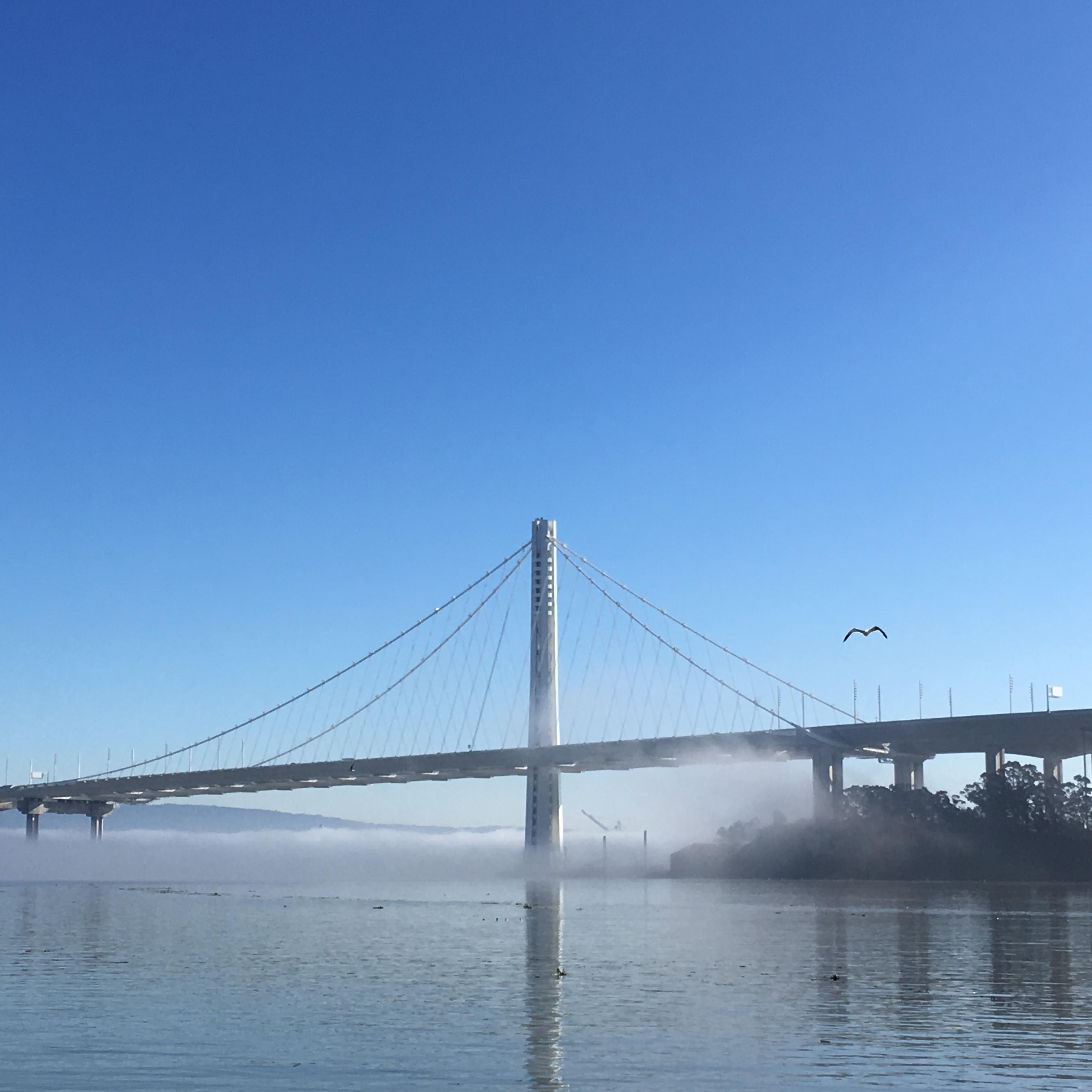
Uploaded on 2017-01-15 by cbecker Chuck Charles Becker
This photo shows the newly completed eastern span of the Oakland-San Francisco Bay Bridge. The original eastern span was a cantilever structure completed in the 1930's that was damaged (although subsequently repaired) in the 1989 Loma Prieta earthquake. An enormous amount of political wrangling took place with many interests pulling for their own benefit. The initial estimate for the span was $1.3B US but the final cost (less ongoing repair efforts to correct structural and material defects) is now approximately $6.5B US. Much of the material, steel and structure was produced and manufactured in China, then shipped to the US. This was over the urgent protests of US steelworkers unions, but they did not prevail largely because non-government labor unions in the US have been rendered largely powerless by changing conditions and the interests of Big Money. Alas, many structural and material problems, alluded to earlier, have emerged and continue to emerge. The problems stem not only from the ineptness of the contractor who produced the bridge (they had never undertaken a project of even remotely this scale) but also because of a profoundly defective design. The architect whose design won was completely consumed by the aesthetics, in making a statement that would astonish and delight observers. Unfortunately, his design required a single pylon self-anchoring suspension design far beyond anything previously attempted. From an aesthetic perspective, the design is scornful of the existing bridges in the area, particularly the west span of the Bay Bridge and the Golden Gate Bridge, both of which are anchored suspension bridges. What makes his design an aesthetic disaster is that unlike the west span and the Golden Gate, where the towers are balanced and emphasize the horizontal component of the bridge (bridges are, after all, horizontal affairs known for their length, not their height), this design emphasized the vertical and is oddly and disturbingly unbalanced. The west span is so long, graceful, and perfect that the east span should (in any thoughtful design) remain what it is: reserved and humble, to serve rather than conflict with the "main show". It is incorrect to blame globalization for all of the defects of this bridge, but globalizing this design did not help. The San Francisco Bay Area is now stuck with this "thing" for the foreseeable future.